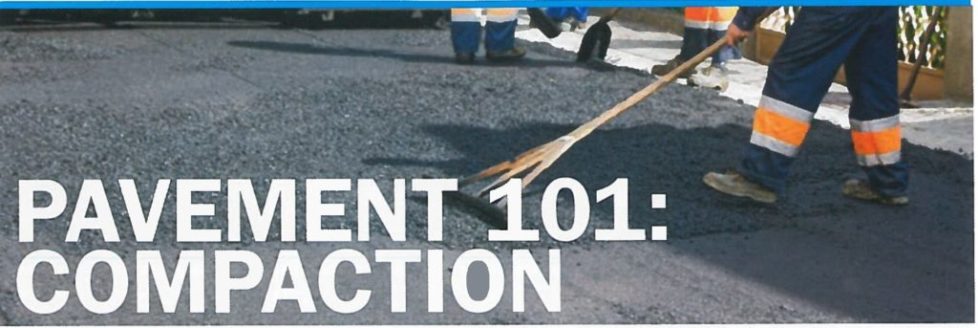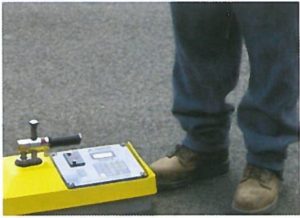
Pavement 101: Compaction
There are many factors that should be considered and followed when placing new hot-mix-asphalt (HMA) whether in new or rehabilitation applications. One of these factors is COMPACTION of the new asphalt. Compaction is the process of reducing the volume of material by compression. In asphalt paving, this is achieved by
the types of rollers, number of rollers, the rolling patterns, and the material placement temperatures.
Properly compacting hot-mix asphalt will result in approximately 25% (1/4-inch per I-inch) reduction in the material thickness. It is recommended that pavement thicknesses be specifically stated in finish compacted thickness and not “install X-number of inches of asphalt”.
Advantages of properly compacted hot-mix asphalt result in the following.
- Locking the asphalt particles together to reduce air voids, known as consolidation, in order to reduce permeability
- Increased durability
- Material longevity
- Creating a smooth and uniform surface

Nuclear Density Gauge to test the finished pavements to ensure proper compaction.
Pavement compaction is achieved by the use of mechanical, vibratory rollers. The rollers are driven across the pavement while at the highest temperature, typically between 240° F to 290°F, in order to compact or consolidate the pavement. By keeping the pavement rollers in the proper rolling pattern, or zone, target compaction density requirements can be achieved. Often times, different size rollers are needed depending upon pavement thickness to obtain desired compaction levels. It is also important to cross roll when placing asphalt to help maintain uniform surfaces, particularly when
paving parking lots and drive lanes. The ideal compaction range is typically between 92%- 98% of the theoretical density.
As the pavement is being placed, there are several methods of testing asphalt pavement for compaction. The most common method is a Nuclear Density Gauge. The gauge measures compaction as the pavement is placed. Therefore, a technician can tell the roller operator if additional compaction is needed. Once the pavement is placed, core samples with laboratory analysis can also be performed to confirm the compaction levels. Testing of the finished pavement is recommended to ensure materials were placed in accordance with specifications and industry standards.
There are a number of problems that can occur when proper compaction is not achieved.
- Over-compacting can cause the pavement to segregate and become This can lead to premature cracks and failure.
- Insufficient compaction can result in raveling of the pavement. This is when the asphalt mix begins to separate, and the aggregate components detach from the mix. This can result in a weakened pavement, which leads to premature distress of the pavement and overall reduced life expectancy.
Once the pavement is placed, correction of improper compaction is very complicated and costly. In most instances, the pavement would need to be removed and replaced.
The goal in compacting hot-mix asphalt is to provide a smooth, structurally sound, durable and long-lasting asphalt pavement. If questions remain, please contact a professional pavement consultant.
Written by: Ron Brookman
Pavement Consultant, Engineering & Technical Consultants, Inc.
410-312-4761
rbrookman@etc-web.com
